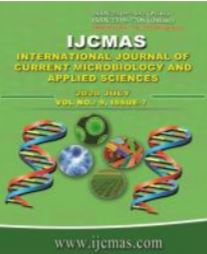


 National Academy of Agricultural Sciences (NAAS)
National Academy of Agricultural Sciences (NAAS)

|
PRINT ISSN : 2319-7692
Online ISSN : 2319-7706 Issues : 12 per year Publisher : Excellent Publishers Email : editorijcmas@gmail.com / submit@ijcmas.com Editor-in-chief: Dr.M.Prakash Index Copernicus ICV 2018: 95.39 NAAS RATING 2020: 5.38 |
The present study was conducted to assess the goat rearing pattern and socio personal status of tribal farmers in Attappadi region of Kerala. Results indicated that about 20 per cent of tribal farmers were landless while 45 per cent of them owned less than an acre of land and the rest (about 35%) owned more than an acre of land. Majority (61.27%) of the goat farmers of Attappadi region were illiterate, unlike among other regions of the state, where literacy generally exceeds 90 per cent. Nearly 70 per cent of the flocks were composed of 6-15 animals. Animal housing facilities were severely limited and 41.70% of farmers opted for the extensive production system. The nutritional requirements of the goat were met by adjusting the grazing hours depending upon the season. There was a positive correlation between total goats reared by farmers and total land owned by them (r = 0.175*). As the flock size increased, the number of grazing hours also increased (r = 0.223**). There was a negative correlation between total goats reared by farmers and the deworming status of goats (r = -0.187**). A negative correlation between total land owned by farmers and housing facilities provided to goats (r = -0.181**) was observed.
 |
 |
 |
 |
 |